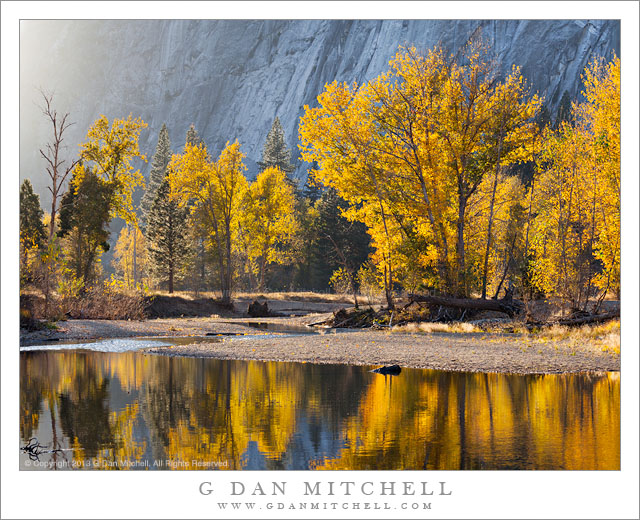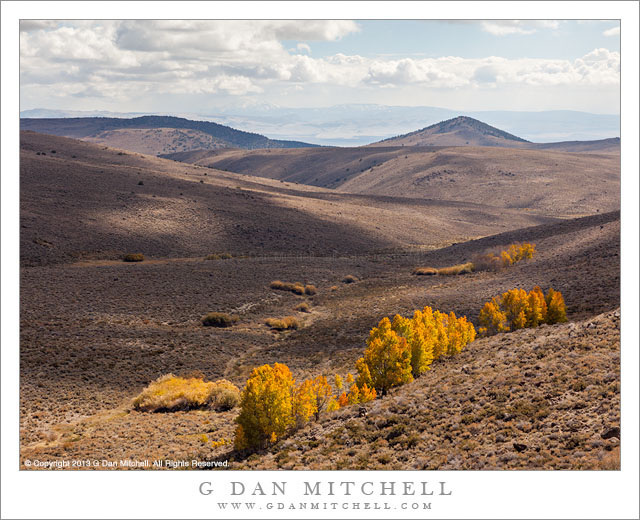
Black Oak, Meadow, Autumn. Yosemite Valley, California. October 31, 2013. © Copyright 2013 G Dan Mitchell – all rights reserved.
A backlit black oak tree with autumn foliage stands in a meadow below Sentinel Rocks, Yosemite Valley
This black oak, like so many in Yosemite Valley, stands in a large grassy meadow. Although the autumn foliage of these trees may seem less spectacularly colorful than that of the big leaf maples and the cottonwoods, the black oak has a more subtle beauty in the fall. But when lit from behind, early or late in the day when the sun is low, the color of black oak leaves can be surprisingly intense. Off all the fall colors in the Valley, in some ways the combination of that of these oaks and the grasses of the meadows where they are found seems to most strongly speak of fall to me.
This single tree is in a meadow filled with black oaks. I would not be surprised to find that there are 100 of them here. On this afternoon I had gone to the meadow to photograph something different, a group of small cottonwood trees growing near the bank of the Merced River. Finishing that project, I was about to start back toward my car when I noticed that a short-lived beam of direct sun was coming down from an opening in the upper cliff walls and spotlighting this tree. Naturally, I changed my plans, took a little detour, and spent a few minutes with this tree.
 G Dan Mitchell is a California photographer and visual opportunist whose subjects include the Pacific coast, redwood forests, central California oak/grasslands, the Sierra Nevada, California deserts, urban landscapes, night photography, and more.
G Dan Mitchell is a California photographer and visual opportunist whose subjects include the Pacific coast, redwood forests, central California oak/grasslands, the Sierra Nevada, California deserts, urban landscapes, night photography, and more.
Blog | About | Flickr | Twitter | Facebook | Google+ | 500px.com | LinkedIn | Email
Text, photographs, and other media are © Copyright G Dan Mitchell (or others when indicated) and are not in the public domain and may not be used on websites, blogs, or in other media without advance permission from G Dan Mitchell.



